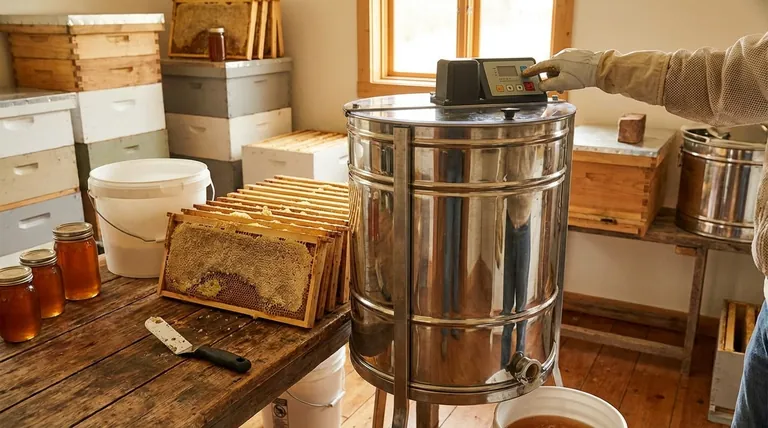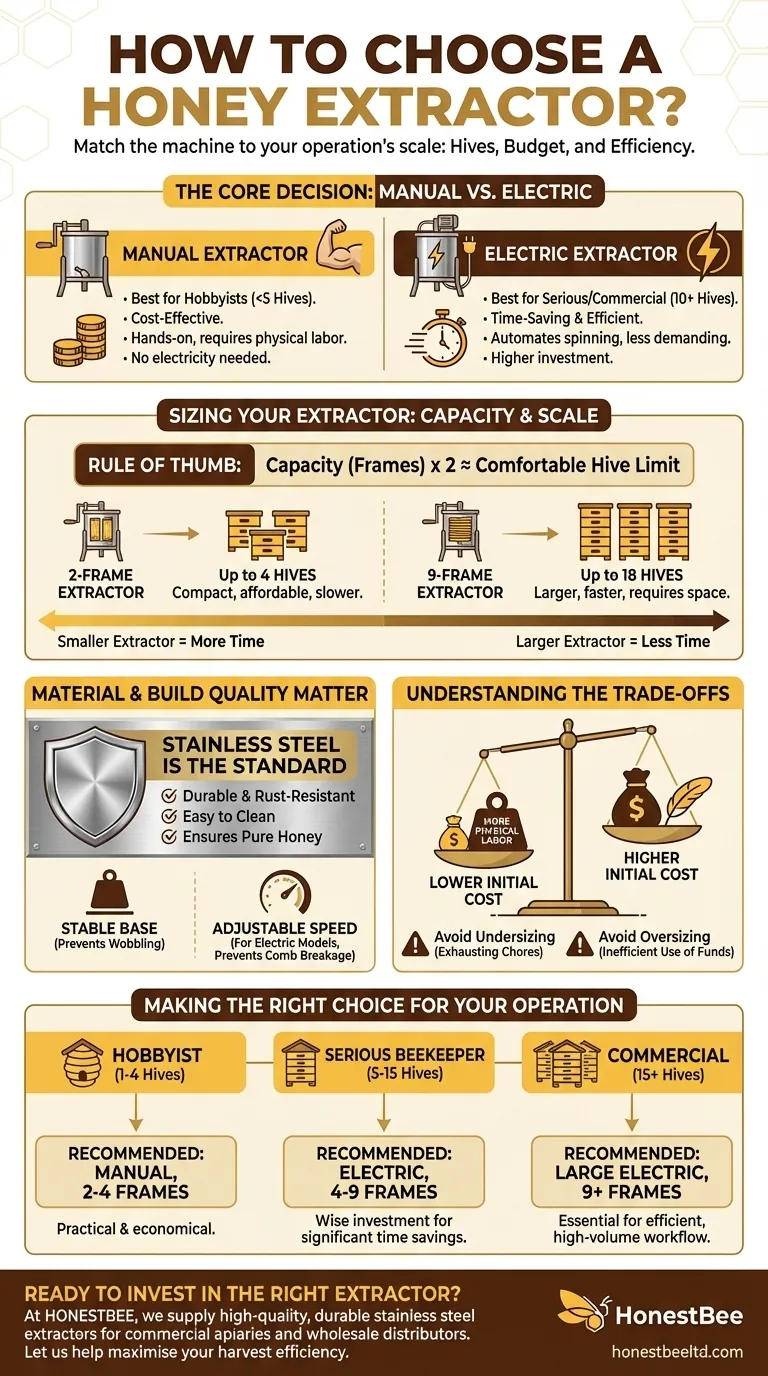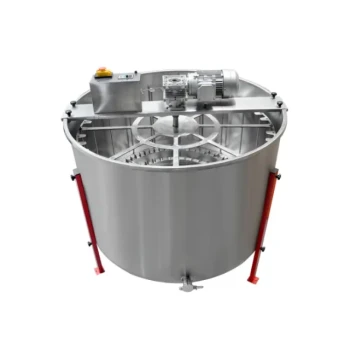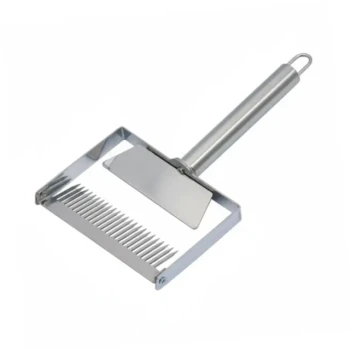To choose the right honey extractor, you must primarily match the machine's capabilities to the scale of your beekeeping operation. The decision hinges on three key factors: the number of hives you manage, your budget, and whether you prioritize efficiency and time-savings over a lower initial cost.
The core decision is not about finding the "best" extractor, but about aligning the right tool with your specific goals. You are essentially choosing between investing money (for an electric model) or investing your own time and labor (for a manual one).

The Core Decision: Manual vs. Electric
Your first and most significant choice is the power source. This single decision will guide the rest of your selection process, as it directly relates to the scale and intensity of your beekeeping.
When to Choose a Manual Extractor
A manual, hand-crank extractor is the ideal starting point for hobbyists or small-scale beekeepers. They are operated by turning a crank, which spins the frames inside.
These models are the most cost-effective option. They are perfectly suited for beekeepers with a small number of hives, typically fewer than five. They also offer a more tactile, hands-on experience and do not require access to electricity.
When to Choose an Electric Extractor
An electric extractor automates the spinning process, making it significantly faster and less physically demanding. This is the clear choice for serious or commercial beekeepers.
If you manage more than a handful of hives (a common rule of thumb is 10 or more), the time and labor saved by an electric model is a worthwhile investment. These machines allow you to extract large quantities of honey with minimal effort, dramatically increasing your efficiency on harvest day.
Sizing Your Extractor: Capacity and Scale
After deciding on the power source, the next critical factor is the extractor's capacity, which is measured by the number of frames it can hold at one time.
The "Hives to Frames" Rule of Thumb
A useful guideline is that an extractor can comfortably service double the number of hives as its frame capacity. This helps you match the machine size to your apiary.
For example, a 2-frame extractor is generally sufficient for an operation of up to 4 hives. A 9-frame extractor could service up to 18 hives.
The Impact of Size on Time and Space
A larger extractor costs more and requires more storage space, but it processes frames much faster. A smaller extractor is more affordable and compact but will extend the time you spend on extraction day.
Material and Build Quality Matter
The physical construction of your extractor determines its longevity, ease of use, and the safety of your honey.
Why Stainless Steel is the Standard
Stainless steel is the universally recommended material for honey extractors. It is highly durable, rust-resistant, and easy to clean, ensuring your honey remains pure and uncontaminated. While less expensive plastic models exist, a stainless steel unit is a superior long-term investment.
Key Features for Better Performance
Beyond the core material, look for features that improve the extraction process. A stable base is crucial to prevent the machine from wobbling or moving during operation.
For electric models, adjustable speed controls are highly beneficial. Starting at a low speed prevents the heavy, full combs from breaking apart before gradually increasing the speed for full extraction.
Understanding the Trade-offs
Choosing an extractor involves balancing competing priorities. Being aware of these trade-offs will help you make a more informed decision and avoid common pitfalls.
The Cost vs. Labor Equation
The fundamental trade-off is between your budget and your time. A lower-priced manual extractor demands a significant input of your physical labor. A more expensive electric model effectively buys back your time and energy.
The Frustration of Undersizing
Attempting to save money by purchasing an extractor that is too small for your operation is a common mistake. If you have 10 hives but a 2-frame manual extractor, your harvest day will become an exhausting, multi-day chore.
The Downside of Oversizing
Conversely, buying a large, commercial-grade extractor for only two hives is an inefficient use of funds and storage space. The goal is to select a machine that meets your current needs with a small amount of room for future growth.
Making the Right Choice for Your Operation
Use your beekeeping goals to make a final decision. The right extractor will feel like a natural extension of your workflow, not a bottleneck.
- If your primary focus is a hobby with 1-4 hives: A 2 or 4-frame manual stainless steel extractor is a practical and economical choice.
- If your primary focus is a growing passion with 5-15 hives: An electric extractor with a capacity of 4 to 9 frames is a wise investment that will save you significant time.
- If your primary focus is a commercial or large-scale operation: A large-capacity electric extractor is essential for maintaining an efficient and profitable workflow.
By matching the extractor's type, size, and material to your specific needs, you will make a confident investment that serves you well for many harvests to come.
Summary Table:
| Key Factor | Hobbyist (1-4 Hives) | Serious Beekeeper (5-15 Hives) | Commercial (15+ Hives) |
|---|---|---|---|
| Recommended Type | Manual Extractor | Electric Extractor | Large Electric Extractor |
| Typical Capacity | 2-4 Frames | 4-9 Frames | 9+ Frames |
| Primary Benefit | Cost-Effective | Time-Saving & Efficient | High-Volume Processing |
| Material | Stainless Steel (Recommended) | Stainless Steel (Recommended) | Stainless Steel (Recommended) |
Ready to Invest in the Right Honey Extractor for Your Apiary?
At HONESTBEE, we supply commercial apiaries and beekeeping equipment distributors with high-quality, durable honey extractors designed for efficiency and long-term performance. Whether you're scaling your operation or need reliable wholesale equipment, our stainless steel extractors are built to handle the demands of serious beekeeping.
Let us help you maximize your harvest efficiency. Contact our team today to discuss your specific needs and explore our wholesale-focused product range.
Visual Guide

Related Products
- Electric 8 Frame Honey Spinner Extractor Equipment for Beekeeping
- HONESTBEE 72 Frame Industrial Electric Honey Extractor for Beekeeping
- HONESTBEE 3-Frame Manual Acrylic Honey Extractor
- Commercial Electric 12 Frame Honey Extractor Spinner Motorized Honey Extractor
- electric honey extractor honey centrifuge 3 frame honey extractor stainless steel honey frame extractor
People Also Ask
- How long should you spin honey for? Master the Art of Efficient, Safe Extraction
- What machines are needed in beekeeping besides basic tools? Scale Your Honey Harvest Efficiently
- Why is cleaning a honey extractor important in beekeeping? Protect Your Honey Quality & Equipment
- How long should you spin honey? Master the Art of Efficient, Damage-Free Extraction
- What equipment is needed for extracting honey? A Complete Guide for Every Beekeeper



















